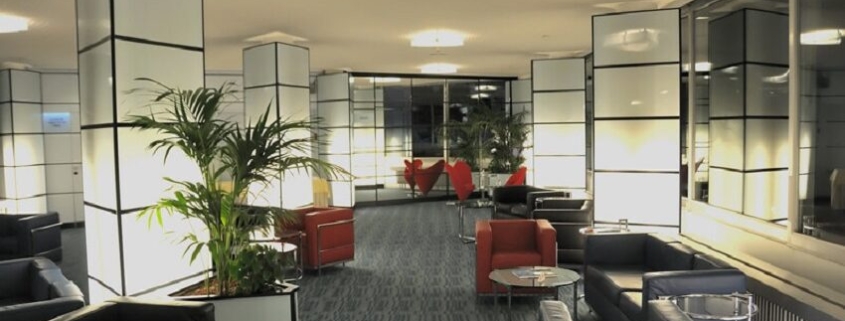Blending Healthcare And Hospitality To Thrive In The Post-COVID-19 Medical Landscape
A new project in Flushing, New York, is slated for delivery in late 2021 and set to become a landmark for top-quality healthcare in the area.
The Eastern Mirage Medical Center, connected to the five-star Eastern Mirage Hotel, will help satisfy increased patient demand for state-of-the-art medical facilities, propelling the associated practices and medical institutions to enhance business growth.
This medical center represents the outcome of more than ten years of design and planning and incorporates the most advanced technology available to hospitals today — critical selling points considering the pressure physicians face in attracting and retaining high-income patients after a tumultuous year.
According to the developer, Fleet Financial Group’s Richard Xia, the concept of the Eastern Mirage Medical Center reveals the symbiotic relationship potential for medical offices and hospitality, creating a steady flow of travelers for the hotel as well as a more welcoming, hospitality-inspired setting for the medical office itself.
“Patients have raised the bar for their medical experiences,” said Xia. “Physicians and healthcare institutions that attune themselves to those needs and successfully blend hospitality and healthcare will remove barriers to growing their practice and find themselves in great demand.”
Here are three factors guiding the development of the Eastern Mirage Medical Center that every healthcare operation must take into account in order to remain competitive:
High-Tech Features That Support Patient Comfort And Connection
A modern and futuristic medical environment reassures patients they’re in good hands and inspires confidence they’ve secured the top physicians in the field. However, few legacy buildings in the healthcare space can support truly high-tech renovations, and those that do cannot do so seamlessly.
 High-tech features refer to much more than the latest computers and software. With truly integrated healthcare and hospitality, the building itself becomes a conductor of convenience, applying technology to the patient experience to make sure it is seamless, efficient, and comfortable.
High-tech features refer to much more than the latest computers and software. With truly integrated healthcare and hospitality, the building itself becomes a conductor of convenience, applying technology to the patient experience to make sure it is seamless, efficient, and comfortable.
The first example that came to mind for Xia was the Eastern Mirage Medical Center’s direct fiber optic connection, which enables lightning-fast data transmission between practitioners in the medical center and patients in the hotel as well as between practitioners themselves.
“With so many physicians shifting their patient data to the cloud, Internet speed and security has become a fundamental component of success,” explained Xia. “Faster and higher-quality connection and imaging means doctors can make a better assessment of their patient and deliver a more responsive, connected patient experience.”
At the Eastern Mirage Medical Center, integrated high-tech features include:
•5G Fiber optics directly wired into each office and connected to the hotel, offering physicians a high-speed, non-interrupted network connection from medical office to suite
• Facial and voice recognition security features for offices and elevators to create an almost completely touchless patient experience
• Full-capacity BMS system which offers unparalleled oversight and control over HVAC system, indoor air quality, and pressure
Human-Centric Amenities And Aesthetically Pleasing Design
Many physicians are surprised to learn that amenities can be a larger factor in driving traffic to hospitals than clinical quality. In fact, the design of a hospital and recovery environment can have a significant impact on everything related to patient recovery, including patient satisfaction, costs, infection, and outcomes —which is why there’s so much demand among patients for human-centric and aesthetically-pleasing hospital design.
 The design of the Eastern Mirage Medical Center takes this research into account, ensuring doctors can provide their patients with a beautiful, modern, and relaxing building that inspires patient confidence. Modern medical centers like this take the work out of providing a flawless patient experience, with every detail thought-out in advance: stunning views, quiet solitude in the midst of a bustling city, and thoughtful, healthful food and dining experiences all in one space.
The design of the Eastern Mirage Medical Center takes this research into account, ensuring doctors can provide their patients with a beautiful, modern, and relaxing building that inspires patient confidence. Modern medical centers like this take the work out of providing a flawless patient experience, with every detail thought-out in advance: stunning views, quiet solitude in the midst of a bustling city, and thoughtful, healthful food and dining experiences all in one space.
“We see beautiful architecture, design, and amenities directly contribute to the quality of medical services,” said Xia. “This gives patients the best possible experience while allowing doctors to justify the premium charges associated with their high-quality services and grow the prestige of their practices.”
A few of the architectural and design traits of the Eastern Mirage Medical Center include the following:
• Five-layer panoramic glass curtain wall with heat insulation, sound absorption (-51db) and light transmission to provide a gorgeous view of the city and very little noise pollution despite its convenient location near the LaGuardia Airport (LGA)
• Architecturally the tallest building in downtown Flushing, further distinguished by its striking glass curtain wall and high ceiling height ranging from 11ft to 14ft
• Safe and nontoxic recycling of environmentally friendly building materials, including Turkish marble whole-stone floor and Portugal limestone sinks
World-Class Hospitality, Comfort, And Privacy For High-Income Patients
For physicians that serve high-income patients, the quality of the appointment, procedure, recovery, and visiting experiences is of utmost importance. But it’s almost impossible to meet those standards as a stand-alone or individual practice in a legacy or refurbished building — your discerning patients will never feel quite at home.
 A luxury medical and recovery experience like the one at the Eastern Mirage Medical Center removes all of those barriers. Physicians plug-and-play their practices into an ecosystem of world-class hospitality, comfort, and privacy, without having to plan or develop it themselves.
A luxury medical and recovery experience like the one at the Eastern Mirage Medical Center removes all of those barriers. Physicians plug-and-play their practices into an ecosystem of world-class hospitality, comfort, and privacy, without having to plan or develop it themselves.
“It’s very difficult to replicate a high-income patient’s high-end lifestyle away from home, but we’ve done it here,” said Xia. “The Eastern Mirage Medical Center allows medical professionals to offer their patients a private, restful place to recover from their appointments and procedures, with all the comforts of home and convenience of a world-class hotel.”
At the Eastern Mirage Medical Center, world-class hospitality and privacy features include:
• More than 300 private underground parking spaces and 4 barrier-free elevators to enhance the door-to-door service experience
• Medical offices integrated with a self-operated, high-end hotel and Michelin-starred restaurant
• Unbeatable dining, entertainment, and leisure components including an above-ground fish tank pool and hotel-affiliated medical spa
• Over 34,000 SF of well-designed multifunction green outdoor space with privacy protection throughout the entire building
Secure A Place In The Future Of Healthcare
A new generation of technology is available to medical care providers, and a new generation of patients wants access to it. Physicians and medical practices that want a place in the future of healthcare must secure a facility like the Eastern Mirage Medical Center that meets patients’ high standards for visual aesthetics, hospitality, technology, and medical care.
Learn About the Eastern Mirage Medical Center
Are you interested in elevating the quality and luxury of your patient experience? Call Compass Commercial at 844-896-9210 (toll-free), or click here to learn more about the Eastern Mirage Medical Center.
Source: Fierce Healthcare




